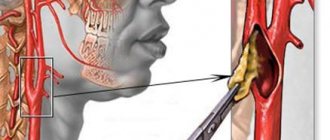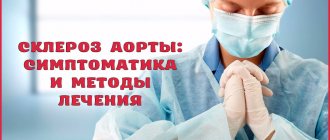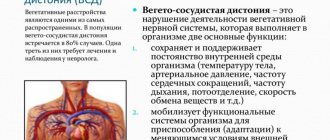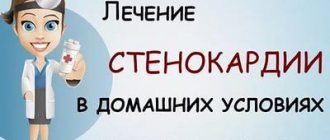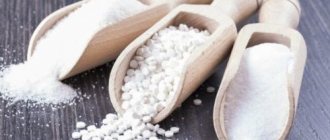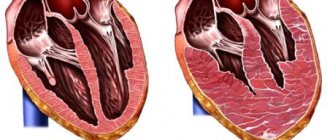Blue veins on the legs most often appear in women after 30 years of age, but men often suffer from this disease. This is a type of vascular disease and its manifestation occurs gradually. A person does not immediately notice how reddish stars first appear on his legs, then a bluish cobweb, and then a clearly defined bulge of veins. It is necessary to fight this disease.
If veins appear on other areas of the body, such as the arms, this will not indicate that the person has varicose veins. Most likely, physical labor made them pronounced.
If the legs have a bluish tint, a reddish mesh and bright tubercles of veins are visible, this means that varicose veins are developing.
Veins may appear on the chest of a pregnant woman. This is caused by the active work of the mammary glands.
Development of blue vein pathology
Why veins are blue is of interest to everyone. The answer is simple: this color expresses the condition of the blood and blood vessels. When they appear on the body, it means there is a danger of venous disease. The causes and development of such pathologies can be completely different.
The most common manifestations of blue veins:
- First, small venous stars of red or purple color appear. At the first stage they are barely noticeable. This is due to the fact that capillaries expand. You can help blood circulation with special creams.
- Spider veins begin to grow or appear in new places. Vein disease progresses and blood vessels become clogged. Urgent consultation with a doctor is required.
- The skin in the area of the stars begins to acquire a bluish tint. These blue spots spoil the appearance and cause discomfort. A person begins to get tired quickly even after a slight load on the legs. The limbs swell quickly. This indicates a malfunction of the venous valves. Treatment with medication is possible.
- As the disease develops further, veins begin to stand out on the skin. They become tortuous and acquire a pronounced bluish color. Leg pain occurs regularly. In this case, radical treatment is already required and medication alone cannot help.
Cause of blue spots on legs
Clearly visible blue veins on the legs are already in the midst of varicose veins. However, no disease can appear out of nowhere. Varicose veins, like any other disease, also has its causes. And these reasons are not one or two, but about two dozen. Here are just a few of the most common:
- Heredity.
- Female.
- Pregnancy.
- Childbirth.
- Great physical activity on the legs.
- Lifting weights.
- Constant work on your feet.
- Excess weight.
- Taking hormonal medications.
As a rule, women most often suffer from varicose veins. They are the ones at risk. However, blue veins on the legs can often be seen in men. And here, as a rule, there are no special reasons. Most often it is excess weight and hard work.
Varicose veins over time lead to two very serious consequences - varicose veins and chronic venous insufficiency. Varicose veins include external manifestations of the disease - those same stars, nodes, blue veins.
Chronic varicose veins are pain in the legs after a working day, cramps in the calves, severe swelling, and skin insensitivity.
Diseases don’t just happen, as we know. There are many reasons for this.
The most common include:
- Heredity that parents give to their children;
- Features of nature, female predisposition;
- Pregnancy period;
- Childbirth;
- Lots of physical activity;
- Heaviness;
- Constantly being on your feet;
- Overweight;
- Hormonal drugs.
As a rule, women are most susceptible to varicose veins. Women, due to their natural characteristics, are most at risk of the disease.
This does not mean that this problem bypasses men. The most common causes in men are the burdens that men carry on themselves.
Varicose veins can subsequently lead to serious consequences. In addition to varicose veins, venous insufficiency may occur.
Varicose veins include syndromes that manifest themselves externally. That is, nodes, stars and veins are an indicator of varicose veins.
There are many reasons for the appearance of varicose veins. It is worth highlighting the main ones.
A common cause is heredity. Look carefully at your parents' legs: if you have varicose veins, this means that you are also at risk.
At the slightest manifestation of the disease, immediate treatment should be started. Most often, women suffer from blue veins on their legs.
Varicose veins can develop during pregnancy. There may be several reasons for this: sudden weight gain, changes in hormonal levels, and little physical activity.
Varicose veins can appear from a sedentary lifestyle or wearing high-heeled shoes.
Varicose veins worry women most of all, but the disease is also quite common among men. But at the same time, the strong half of humanity is not as worried about the external condition of their legs as girls and women. After all, varicose veins necessarily manifest themselves as large swollen veins on the legs and, in some cases, even an extensive vascular network.
However, many people may be scared when they see capillaries on their legs or face that have changed and become visible. Below are the most common reasons why blood vessels burst.
In some parts of our body the skin is very thin. These vulnerable parts include the face and legs. As we age, the skin becomes thinner and capillaries can break due to minor injuries, either internal or external.
The reasons may be:
- injury;
- heredity and hormones;
- Lifestyle;
- chronic venous insufficiency.
Capillaries on the face
Bruises are dark blue-colored spots that appear on the skin after a blow or injury, indicating broken capillaries under the skin. This is the result of hemorrhage from a burst vessel.
When you hit furniture or other objects, you get broken capillaries and bruises. Arms and legs are exposed areas of the body that are easily accessible to bruises. With age, the capillaries in the skin grow weaker, so they burst more easily and the resulting bruises become increasingly common.
The skin becomes thinner with age, the body's metabolic and repair processes slow down, and discoloration of broken capillaries may be more obvious, especially on the legs and face, which lack a protective fat layer.
This makes bruising from broken capillaries more noticeable. Therefore, older people always have a very pressing question: how to strengthen veins and blood vessels.
and what treatment will be effective.
Contusion of the lower limb
Heredity and hormones
Heredity and hormonal changes, including during adolescence, pregnancy, menopause or treatment with steroid drugs are all the main reasons why veins and capillaries burst.
Contraception using birth control pills or estrogen treatment can also weaken the walls of blood vessels, leading to spider veins and worsening varicose veins. In some cases, removal of the affected areas will be unavoidable.
Hormonal changes during pregnancy
Obesity, inactivity or aging can lead to chronic venous insufficiency, a potentially dangerous health condition that causes blood to pool in the lower legs.
Varicose veins occur due to insufficient pumping forces of the veins to return blood to the heart. With excess pressure from these clots, the capillaries under the skin burst, creating discolored spots.
The patient should strengthen them, because without proper treatment, these areas of broken capillaries can develop into ulcers. To avoid venous insufficiency, it is necessary to normalize your diet to a healthy weight, as well as do regular exercise.
The latter will help strengthen the body and are the key to maintaining a “second wind” of the muscles and good functional blood circulation in the vessels of the legs. This will help avoid and minimize the development of new broken capillaries and other signs of poor circulation in the extremities and face.
The role of venous valves in the dilation and darkening of veins
People often wonder why blue veins appear on their legs.
To understand the reason, you need to understand the work of the veins and their interaction with the entire body. The role of venous valves in the dilation and darkening of veins is interpreted in several ways: The normal operation of valves in the veins depends on the general condition of the vessels in the human body. Pathology occurs when there is a disruption in the functionality of blood vessels. These deviations affect their blockage. This is what provokes expansion.
Due to improper functionality, reflux develops - a condition when the venous valves cannot control the reverse flow of blood. Congestion occurs in the veins, which prevents uniform blood supply to the limb.
The valves do not stop functioning immediately, but gradually. Because of this, vasodilation occurs. Excess blood accumulates in one place and provokes negative changes in the structure and functions of the vessel.
Vascular pathologies are observed throughout a person’s life. They can be triggered not only by lifestyle and diet, but also by uncomfortable clothing, diseases and bad habits. It is necessary not only to treat this disease, but also to carry out preventive measures from a young age.
Skin pigmentation
- The spots appear as a result of trophic changes in the skin, which, in turn, are caused by chronic venous insufficiency. Such changes are persistent and long-lasting.
- Even if the patient has undergone surgical treatment, the spots may remain for life.
- But trophic changes include not only hyperpigmentation; these include microbial eczema, lipodermatosclerosis and white skin atrophy.
Causes of spots on legs
Hyperpigmentation of the skin occurs during the development of the fourth stage of the disease and the reason for this, first of all, is an advanced disease. Incorrect and untimely treatment can lead to the disease causing thrombosis of deep and superficial veins.
The vascular tissues will thus receive less oxygen, which will ultimately lead to the appearance of blue spots on the legs.
But this is not the only reason, since varicose spots can appear as a result of:
- pathologies of the cardiovascular system;
- diabetes mellitus;
- overweight;
- lower limb injuries;
- infectious diseases;
- pregnancy.
With all these conditions, swelling of the legs increases, which provokes skin irritation.
Symptoms
The fact is that varicose veins spots do not appear immediately, but after a certain period of time. Because they are formed due to stagnation of blood, and for this it is necessary that the veins become dilated and some of the blood remains in them.
Among the main symptoms that can be attributed to the initial stage of the disease are:
- Swelling and swelling of the skin on the legs.
- The appearance of red itchy spots.
- The skin becomes smooth and shiny.
- Small bubbles appear, which go away on their own after a certain time.
If these primary symptoms are not eliminated in time, others will appear:
- The skin will begin to itch very much.
- The red spots will gradually turn brown.
- The skin will become very dense, it will be impossible to fold it.
- Liquid will begin to seep through the skin.
Typically, varicose spots are localized on the shins and ankles, since this is where the skin is much thinner.
Red spots
Varicose eczema
Red spots occur when the vascular wall is greatly weakened and bursts under pressure exerted by a person. That is why such spots very often appear in overweight people, during pregnancy, and also as a result of trophic changes in the skin due to varicose veins.
Red spots can pose a threat to a person’s life, since they provoke the occurrence of subcutaneous hematomas that cannot resolve on their own.
If spots of this kind become large-scale, then surgical intervention followed by rehabilitation is necessary (lose weight, normalize metabolism, wear compression garments, take vitamins and minerals, engage in physical therapy).
Also, red manifestations on the legs may indicate the appearance of superficial thrombophlebitis
Superficial and deep thrombophlebitis
Brown spots
Stasis dermatitis
Brown spots usually occur as a result of improper or untimely treatment of red spots. They pose a great threat, appear in the ankle area, and can provoke varicose dermatitis and form scars. At the same time, the skin begins to itch very much, becomes dry and dense to the touch.
Blue spots
Blue spots appear at the deep stage of varicose veins. The skin acquires this color due to insufficient oxygen supply to the blood in the lower extremities. However, such manifestations of varicose veins are also very dangerous, since dark spots on the legs can provoke anemia. In addition, dark spots indicate that the disease has become chronic with a trophic complication of soft tissues.
Diseases that cause blue veins
Varicose veins is a general term for vascular disease in the human body, but there are also branches of this disease:
- phlebitis;
- thrombophlebitis;
- thrombosis;
- trophic ulcers;
- chronic venous insufficiency;
- thromboembolism.
Important! This disease can affect not only adults, but also children.
Let's look at the symptoms of this pathology, diagnosis, and then determine the treatment and prevention of varicose veins.
In children
If a child has blue veins on his legs, the doctor will determine what to do. This may be a congenital defect or an acquired disease. Therefore, an extensive examination, testing and an individual approach are needed.
If the mother or father had varicose veins, then they may appear in a progressive form in the baby.
Provoking factors:
- unhealthy diet;
- lack of vitamins;
- past illnesses.
In children, varicose veins may develop no sooner than six months after birth. The pathological effect can have a detrimental effect on the heart valve and blood vessels. A child can acquire varicose veins even in the womb if he is in an uncomfortable position.
In adults
Why there are blue veins on the legs of adults becomes clear if you conduct a diagnosis, take tests and analyze a person’s lifestyle.
Causes:
- thrombosis and trophic disorders;
- impaired blood circulation;
- pressure on the venous walls of blood vessels;
- malfunction of the valve apparatus.
To keep your feet healthy, you should constantly monitor your condition. If a person systematically wears uncomfortable tight clothes and shoes and does not adhere to proper nutrition, then after a few years the first symptoms of emerging and progressive varicose veins may appear.
Treatment options
If the disease is not very advanced and is at an initial stage, then you can try to cure it with medications and ointments. In order to determine the extent and stage of the disease, you should definitely undergo a so-called duplex or triplex scan, which will give a real idea of the condition of your blood vessels.
After the study, the question of prescribing treatment will be decided. As mentioned above, if the disease has not gone too far, then you should try using tablets and ointments. And among them, the most popular drug is troxevasin.
But if the disease has gone too far, then surgical intervention simply cannot be done. And the main method that is most often used for this disease is the removal of the affected veins.
This operation lasts for an hour. At this time, the so-called non-working veins are removed from the legs. After the procedure is completed, the scars reach a size of 4–5 mm.
However, this type of surgical treatment also has its contraindications. And this:
- Late stage of the disease.
- Cardiac ischemia.
- Infectious diseases.
- Pregnancy.
- Elderly age.
After the operation, blood flow through the deep vessels is restored, which means the person feels much better.
For varicose veins, not only ointments and gels are used, but also tablets. For those for whom gels and ointments are contraindicated, tablets are ideal in the fight against the disease. In addition, tablets can be taken together with gels and ointments, in combination.
Tablets for varicose veins help improve the condition of blood vessels, increase blood circulation, and relieve inflammation
Treatment with green tomatoes. The recipe is very simple and does not require much time. You just need green, unripe tomatoes that need to be tied to the veins. It is necessary to tie tomatoes in the morning, and in the evening you can remove a kind of compress.
Datura seeds. For this type of treatment you will need dope seeds. What to do with them? It is necessary to make a tincture from these seeds.
Before using this treatment method, read all contraindications. Datura seeds are very poisonous and sometimes even dangerous to use.
In order to prepare the tincture, you need to collect the seeds, chop them and add vodka. Place the tincture in a dark place where light is not exposed and wait two weeks.
It is necessary to shake the tincture daily. This tincture should be taken internally. Half an hour before meals once a day. It is best to start consuming the tincture with 15 drops, then increasing the dose of consumption every day. Treatment lasts for a month.
Surgery is the last stage in which surgery is performed and the veins are removed. The operation can be performed either mechanically or using a laser. The recovery period varies significantly. In a similar article we talk about the postoperative period of leg vein surgery.
With mechanical intervention by a surgeon, the rehabilitation process is delayed for 3-4 months. If the operation was performed using a laser, then rehabilitation is reduced and reaches 1-2 months.
In both cases, a compression stocking must be worn after surgery. As a rule, many people prefer laser surgery. This has its advantages - it is easily tolerated and, as mentioned earlier, a faster and less painful rehabilitation period.
How to remove blue veins? At the first signs, all efforts should be directed toward restoring blood flow and good vascular patency.
Must be assigned:
- vitamins C and E, which help restore the elasticity of blood vessels;
- physiotherapy;
- healing baths and air currents that affect damaged blood vessels;
- wearing compression garments.
For inflammation of the veins, herbal treatment and the use of a contrast shower are prescribed. Cold water has an excellent effect on damaged blood vessels and restores their elasticity.
Among other things, an ice shower perfectly relieves swelling of the legs, which is almost always present in people suffering from varicose veins. Therefore, swimming is very useful, especially in sea water.
Fans of self-medication should be warned: if you have varicose veins, you should never use mud wraps.
To determine the extent and stage of development of the disease, a duplex examination should be performed. If the disease is not advanced, then you can try to get rid of it with the help of ointments and medications that the doctor will prescribe for you. One of the most popular drugs is Troxevasin.
If everything goes too far, then more serious treatment methods will have to be used. The main method is surgical removal of damaged veins.
The ultimate goal of any surgical intervention for this pathology is to remove damaged vessels under the skin and eliminate the abnormal release of blood from the superficial to the deep veins.
Any surgical intervention carries a high risk of various complications, so you need to discuss this with your doctor in advance. Surgery cannot be performed at a late stage of the disease, with cardiac ischemia, pregnancy, or in old age, when there is an infectious disease.
After a detailed examination and passing the necessary tests, the doctor will determine which treatment method for varicose veins is best suited specifically for your case.
Most often, the damaged area of the vessel is removed using a small probe, which is inserted into the lumen of the vein. This operation is called stripping. Its main advantage is low injury rate. To carry it out, 2 small incisions are made. Once the vessel is removed, the risk of relapse is no more than 2%. After surgery, patients recover quickly.
Thick and thin, blue and red - vessels on the legs. Every year there are more of them and they appear unexpectedly. Some people try not to notice such defects, while others worry when the vessels on their legs are visible to others.
The vessels on the legs are tubular organs of various sizes through which lymph or blood moves. Violet and blue vessels up to several millimeters thick and red thin vessels with a diameter of less than 1 millimeter become visible on the skin; it also happens that large vessels protrude - varicose veins.
Varicose veins are a very common vascular pathology, affecting about forty percent of the population. Varicose veins - in most cases, is hereditary and is a manifestation of congenital weakness of the vein valves and walls. Signs of varicose veins are different and depend on the stage and form of development of the pathological process.
External manifestations may be:
- swelling of the legs and feet,
- dilated and tortuous subcutaneous venous trunks and their tributaries,
- thickening and darkening of the skin in the ankle area,
- bleeding from varicose nodes and trophic ulcers,
- tendency to hemorrhage and fragility of blood vessels.
The main complaints of patients with varicose veins are cramps of the calf muscles at night, a feeling of heaviness and fatigue in the legs, dull bursting swelling and pain, which intensifies with prolonged standing in an upright position.
Unfortunately, people suffering from varicose veins are in no hurry to see a doctor, because sometimes the disease, other than a cosmetic defect, does not bring them any suffering. But in vain, because this is a disease that sometimes leads to very serious complications - thrombophlebitis, deep vein thrombosis, trophic ulcers.
Venous congestion in the legs leads to blockage of blood vessels with a blood clot and thickening of the blood. As a result of impaired venous circulation in the legs, the nutrition of the skin deteriorates, and long-term non-healing trophic ulcers form.
The capillaries in the legs are the smallest blood vessels in the body, which serve to provide nutrients and oxygen to the body's organs and remove chemical waste products.
Capillaries are very thin and fragile, blood moves one cell at a time, so they need to be strengthened. Broken capillaries under the surface of the skin can appear both from bruises and from thinning of the walls of blood vessels, changes in the functioning of the blood circulation.
Injured capillaries on the legs do not look very aesthetically pleasing.
Capillaries on the legs
In most cases, people want to get rid of unwanted capillary network on their legs or face to achieve an aesthetic effect. There are several ways to treat capillaries that burst.
Symptoms
To understand why veins appear in the legs, you need to know all the stages of vascular malfunction:
- heaviness in the legs;
- convulsions;
- swelling;
- reddish stars;
- blue stars and meshes;
- pronounced venous tuberosity.
Important! Treatment is indicated at any stage, but the more advanced the disease, the more radical the treatment methods will be.
Folk remedies
Traditional medicine offers treatment methods that are highly harmless. Many of them are effective and can be used in combination with medications.
Cabbage compresses
There are many benefits to using fresh cabbage leaves. The leaves separated from the head of cabbage are doused with boiling water and placed in a plastic bag in the refrigerator for a day. The cabbage leaf compress is applied overnight so that the effect can last for a long time throughout the night. Can be fixed with a bandage. The number of such approaches should be about 15.
Kalanchoe tincture
To prepare the tincture, take a 500 ml jar. and filled with chopped Kalanchoe leaves. Boiled water is poured on top. Place in the refrigerator for 7 days, shaking the contents occasionally.
After a week, the solution is filtered. The resulting solution is used to treat the areas every day for a long time - several months.
Grape compresses
For treatment, dark grape varieties are torn off. The berries are kneaded and applied to damaged areas. For the method to be effective, it is advisable to repeat it for at least 1.5 weeks.
Apple cider vinegar compresses
For small areas, apple cider vinegar can be successfully used for treatment, the effect of which complements medications. If there is a large area of affected vessels, this remedy will not be effective.
When and which doctor to go to
Phlebology is the official medical term that determines the direction of all types and stages of varicose veins. The doctor who treats this disease, a phlebologist, gets its name from this term.
He will diagnose, treat and prevent this disease. A person can also first contact a therapist at a local clinic, who will already give a referral to another doctor.
This can be not only a phlebologist, but also a vascular surgeon.
Laser treatment
Laser coagulation for varicose veins is characterized by minimal risks of vein injury and rapid achievement of results. The procedure effectively helps remove varicose veins and has a number of advantages:
- no need for large incisions;
- It is performed under local anesthesia, therefore absolutely painless;
- recovery lasts up to 7 days;
- No spots or scars remain on the skin.
Laser surgery on veins occurs without relapse in 98% of cases.
Methods for detecting the disease
Effective diagnostic methods that will show the causes and degrees of development of blue veins in the legs:
- Doppler ultrasound. This procedure diagnoses blood flow and checks the condition of the valves;
- The Valsalva maneuver is taken to study the functionality of the valves;
- duplex scanning shows changes in the depth of venous vessels and their walls;
- X-ray contrast venography scans and analyzes the patency of blood vessels;
An alternative solution to the problem is magnetic resonance imaging.
It is somewhat similar to phlebography. It is recommended only for acute venous thrombosis. It allows you to conduct research as accurately as possible and diagnose the areas that are most affected.
Safe recipes
Next are several safe and popular recipes for legs that are used to treat varicose veins at home.
Tomato compresses
Tomatoes of varying degrees of ripeness are a simple and affordable remedy in the fight against enlarged veins in the legs, especially in summer and autumn. Those who have tried them on themselves claim that such compresses are very effective. Here are several methods of “tomato” therapy.
Read also: Bee cream saved from varicose veins real reviews
- The first method of application: take unripe fruits and cut them quite large. Pieces of tomatoes are applied to the venous nodes and held until a burning sensation appears on those areas of the skin.
Then remove the tomato and rinse your feet with cool water. The second method of application is the same, only with the exception that the procedure is repeated five times in a row. After two weeks, the knots should soften and after some time, smooth out.
- Ripe tomatoes are also used . The fruits are cut into slices and treatment is continued for two weeks.
- Lemon has a tonic effect. To use this property of citrus, just wipe the skin on areas affected by varicose veins with a slice of lemon.
- Horse chestnut tincture is one of the most famous and time-tested. To prepare it, take chestnut fruits with peel, grind them in a meat grinder, put them in a three-liter jar and top up half with vodka or alcohol (40%). The tincture is kept in the dark for one month, the contents of the jar are shaken several times a week. The resulting tincture is used to wipe the feet several times a day, and always at night.
- Apple cider vinegar strengthens the walls of blood vessels, tones the skin, and eliminates swelling. It is sold in the store, but you only need to choose a natural product. Use vinegar (6%) to wipe the areas where there are spider veins and leave it on the body until the next procedure.
Rubbing from simple products that are always available and on hand helps improve the condition of the skin and blood vessels with varicose veins.
- From Kalanchoe . This recipe helps to quickly get rid of spider veins. Take several leaves of the plant, grind them into a paste and pour 100 ml of alcohol (40%) into it. The resulting product is infused for a week. Apply as a regular compress at night.
- From white cabbage. Sprinkle baking soda on areas of the skin damaged by the disease. Cabbage leaves are soaped with solid soap (preferably laundry soap) and applied to the leg, secured on top with a cloth. The compress is kept on all night.
Herbal infusions
- In equal quantities, take chamomile flowers, chestnut flowers (fruits are possible), yarrow grass, plantain, and raspberry root. Pour two tablespoons of the dry mixture into three glasses of boiling water (600 ml), bring to a boil, remove from heat, and let it brew overnight. In the morning, filter the infusion and consume 150 ml in the morning and evening.
- two tablespoons of nettle into a glass of boiling water and let it brew. Drink 50 ml 3 times a day. The course of treatment is one month.
- Take 20 g of horse chestnut fruits, oak bark, birch, as well as herbs: horsetail, Icelandic moss thallus - 50 g each, astragalus grass, immortelle flowers - 20 g each. Two tablespoons of this collection are poured with 500 ml of just boiled water and cook for 5 minutes, let it brew. Drink 50 ml four times a day.
Food as medicine
Even the ancients knew that food can be medicine. Here are a couple of miracle food recipes .
- 250 g of garlic (or onion) is peeled, minced in a meat grinder, and poured with liquid honey (350 g). The mixture takes one week to gain strength. The product is taken orally before meals, a tablespoon three times a day. Treatment lasts two months.
- Eating grapes shows good results . However, only some varieties are suitable for treatment - Riesling, Semillon, Chaushi, Chasselas. For three days, eat half a kilogram of grapes, with skins and seeds, on an empty stomach.
Take comfrey root (5 parts), comfrey leaf (1 part), chestnut flowers (1 part), white acacia (1 part), pork fat (2 parts). Dry raw materials are poured with hot fat and kept on low heat for 3 hours, filtered. Bandages with ointment are applied to the affected areas and kept for three days. The course of treatment consists of five procedures. If necessary, treatment is repeated after 10–15 days.
Treatment
Treatment of blue veins on the legs should begin with a visit to the doctor, diagnosis and obtaining test results. When pathology is detected and depending on the specific form of development of the disease, the following treatment measures are prescribed:
- taking the necessary medications, dietary supplements, the action of which is aimed at improving the condition of the vascular wall, blood thickness, and relieving inflammatory processes;
- use of therapeutic specialized knitwear;
- physiotherapy - ozone therapy, therapeutic exercises.
If necessary, surgical interventions are indicated for damage to the deep veins:
- electrocoagulation;
- sclerotherapy;
- obliteration;
- crossectomy;
- RF ablation
- phlebectomy.
Some of the innovative methods for treating vein pathologies are Steam therapy, laser treatment and the Gelocast technique.
In tandem with medical and surgical methods of treating blue veins, hirudotherapy has proven itself to be effective.
There are many folk methods that will help prevent or, in tandem with medications and physical procedures, cure the emerging pathology:
- Apple vinegar. It perfectly tones and strengthens the vascular wall.
- Horse chestnut tincture. It can be bought at a pharmacy or made at home.
- An iodine mesh is made on problem areas of the limbs.
- Honey ointments that have a beneficial effect on venous circulation.
- Grated ginger root is used in the form of compresses.
- Tincture of St. John's wort, lemon balm and yarrow.
- Infusions and ointments based on tar soap or carrot tops.
Important! Before using any folk remedies, you should consult your doctor.
Surgery
To combat varicose veins when conservative methods are ineffective, surgical treatment methods are used. The main ways to eliminate pathology are given in the table:
| View | Characteristic |
| Phlebectomy | Surgical removal of affected vessels |
| Scleropathy | Bonding of dilated vessels using an injected substance |
| Laser photocoagulation | Laser closure of a damaged vein |
| Radiofrequency ablation | Sealing veins with radiofrequency radiation |
| Ozone therapy | Elimination of the affected area with a mixture of oxygen and ozone |
| Electrocoagulation | Cauterization of blood vessels with current |
Prevention methods
Recommendations from doctors that will prevent venous expansion and allow you to feel lightness in your legs until old age: To avoid varicose veins, you must adhere to the following rules:
- Don't wear uncomfortable shoes.
- Eat properly.
- To refuse from bad habits.
- Play sports and do not expose your body to excessive physical activity.
After a hard day, it is recommended to massage and give your legs the opportunity to relax with the help of a special orthopedic pillow.
How to remove
Bruises, red, brown and black spots on the lower limbs can only be eliminated with correct and continuous treatment. Upon successful completion of a course of conservative therapy, additional consultation with a vascular surgeon and dermatologist will be required.
All “traces” of varicose veins, including extensive ones in the form of a bruise, can be removed using a medical laser. The operation will be preceded by a long process of normalizing blood circulation. To do this, the attending physician will draw up an individual course of therapy:
Drugs
Drug therapy is of particular importance in the early stages of the disease. Properly selected medications, the action of which is aimed at strengthening and increasing the elasticity of the venous walls, will help stop the progress of the disease and eliminate spots from the skin of the legs.
As part of complex treatment, the following are prescribed:
- Anticoagulants . Prevents the formation of blood clots. Among them: Clexane, Fraxiparine.
- Antioxidants . Among them: vitamin E, Ginkort-fort.
- Disaggregants . Increase blood fluidity and reduce the risk of blood clots. Among them: Aspirin, Doxium, Vasobral.
- Fibrinolytics . They destroy formed blood clots and are prescribed only in combination with other drugs for varicose veins. Among them: Avelizin brown, Thromboflux.
- Phlebotonics . They normalize the outflow of venous blood in the lower extremities and reduce excess pressure on the vessels. Among them: Anavenol, Venarus, Venoruton.
Minimally invasive interventions
Effective mainly in the early stages of varicose veins. Depending on the characteristics of the disease, the following methods are recommended:
- Sclerotherapy . Excludes the affected vein from the circulatory system. Using a very thin needle, a sclerosant drug is injected into the vein. The active substance blocks the blood flow and the walls of the vessel stick together.
- Endovenous laser coagulation . One of the safest methods of surgical treatment. The vessel is punctured with a needle, and under ultrasound control, a laser light guide is led into the lumen of the saphenous vein. Under the influence of the laser, the affected area of the vein stops working and sticks together.
- Radiofrequency ablation . A disposable catheter is used, which is inserted into the vein through a very thin puncture. A radiofrequency pulse acts on the affected vessel wall, causing the vein to close. Blood flow in the area is restored.
- Miniphlebectomy . A small incision or puncture is made over the affected area and, using a special hook, the varicose vein is brought to the surface and removed.
Surgical intervention
It is possible to normalize blood flow in deep veins (with a diameter above 15 millimeters and with great tortuosity) with advanced venous insufficiency using a classic operation - phlebectomy.
Under local anesthesia (rarely, therapeutic sleep), a small incision is made in the groin or lower leg and a probe is inserted. The main trunk of the affected vein with all its ducts is removed and cosmetic sutures are applied.
Diet
Attention! The main rule when creating a daily menu for patients with varicose veins is to avoid exceeding the calorie limit and maintain a healthy weight.
With obesity, there is an excessive load on the veins, and with a deficiency, the process of hematopoiesis and the normal functioning of the entire cardiovascular system are disrupted.
You need to focus on foods rich in vitamins:
- C – ensures the production of collagen and normalizes blood circulation,
- E – maintains veins in tone and promotes their cleansing,
- group B – strengthens the walls of blood vessels,
- K - strengthens capillaries and ensures normal blood clotting.
To this end, the diet should include:
- Broccoli.
- Brussels sprouts.
- Spinach.
- Parsley.
- Tomatoes.
- Lemons.
- Oranges.
- Kiwi.
- Brown rice
- Barley.
- Wheat (bulgur).
It is important to maintain water balance - drink the amount of water recommended for a certain age and taking into account the characteristics of the body (from 1.5 to 2.5 liters per day).
Physiotherapy
A number of physiotherapeutic methods can eliminate aesthetic defects on the skin and generally slow down the progression of varicose veins.
- Ozone therapy – to improve blood circulation. The advantage of the procedure is that it is easy to perform and painless. Minus - it is contraindicated for hyperthyroidism, hypotension, hypoglycemia, diabetes mellitus and a number of other diseases.
- Pressotherapy – to restore elasticity and reduce the permeability of vascular walls.
- Myostimulation – to activate muscle function and normalize blood circulation.
Self-massage is effective for varicose veins, but vacuum massage and LPG are contraindicated. Some experts are of the opinion that LPG massage in a gentle mode can be performed in the early stages of the disease and for the purpose of prevention.
Exercises
Moderate physical activity for varicose veins should be provided constantly. You can select and master special complexes of therapeutic gymnastics in exercise therapy rooms, and then practice independently at home.
The main task is to activate the blood circulation process and prevent stagnation of fluids in the lower extremities. To do this, you need to warm up not only the leg muscles, but also all other parts of the body. If you have varicose veins, exercise in a sitting position and with your limbs down (for example, flexion and extension of the torso) should be avoided.
It is important to avoid overload: running, squats and stretches at an active pace, jumping and power presses, any endurance exercises. Swimming and walking are shown.
Compression jersey
The attending physician will select special medical knitwear that provides the desired degree of compression. It is prescribed to facilitate the outflow of blood, reduce the diameter and fix the affected veins.
In the early stages of the disease, wearing compression hosiery can eliminate heaviness and swelling; at any stage, it can prevent the spread of spots on the skin and the aggravation of other aesthetic defects.
Folk recipes
In the fight against cosmetic skin defects with varicose veins, herbal remedies have proven their effectiveness. As part of complex therapy (required after examination and consultation with the attending physician), the following is used:
- Honey compresses.
- Wormwood mixed with curdled milk.
- Celandine.
- Birch leaves.
- Aloe.
It is advisable to use medicinal herbs and other traditional medicine in the early stages of varicose veins.
How to treat blue and purple thin veins
Blue and red, thick and thin blood vessels on the legs become increasingly common over time on the legs and feet. The female half of humanity is mainly concerned about this problem. Some people try to ignore it, disguise it, while others are worried about this problem to a great extent. Vessels are tubular organs through which blood or lymph moves. Due to various circumstances, thin blue and purple veins begin to appear on the surface of the skin; their thickness is insignificant, but such manifestations seriously spoil the appearance of any attractive legs. The appearance of thin blue veins on the legs indicates problems in the body. Such manifestations do not cause any discomfort and it is difficult to call it a disease, however, according to the international classification, this phenomenon is defined as a chronic venous disease.
How to treat blue and purple thin veins
Blue and red, thick and thin blood vessels on the legs become increasingly common over time on the legs and feet. The female half of humanity is mainly concerned about this problem. Some people try to ignore it, disguise it, while others are worried about this problem to a great extent. Vessels are tubular organs through which blood or lymph moves. Due to various circumstances, thin blue and purple veins begin to appear on the surface of the skin; their thickness is insignificant, but such manifestations seriously spoil the appearance of any attractive legs. The appearance of thin blue veins on the legs indicates problems in the body. Such manifestations do not cause any discomfort and it is difficult to call it a disease, however, according to the international classification, this phenomenon is defined as a chronic venous disease.

